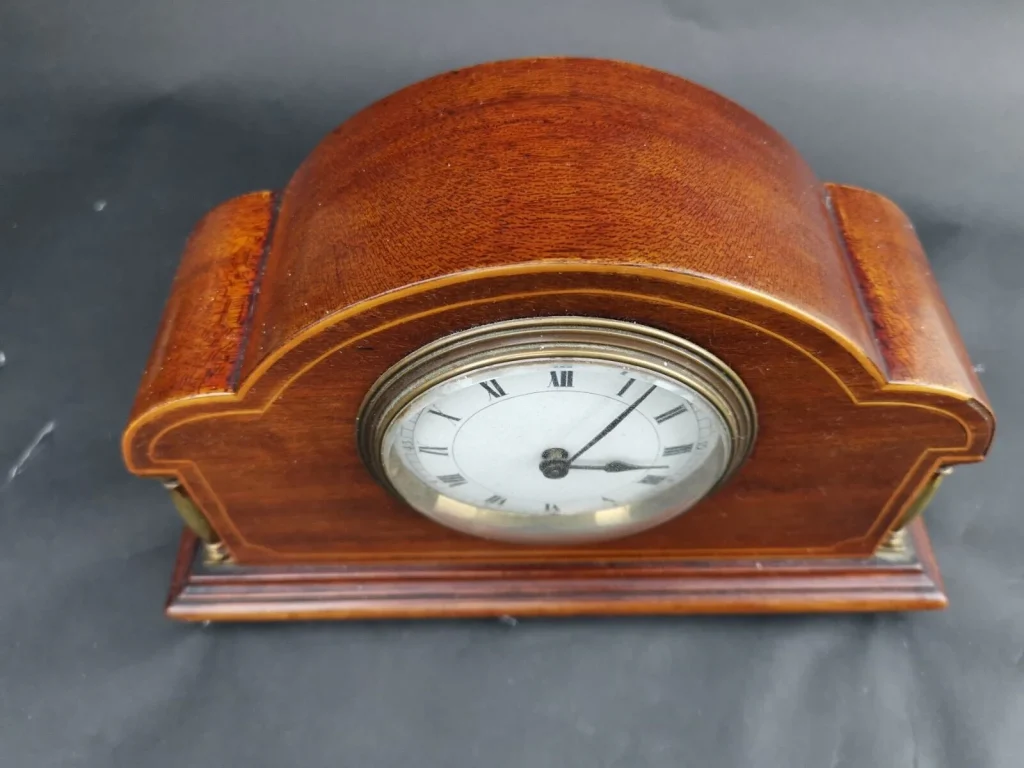How To Remove Old Alligatored Shellac From Antique Clock Case? Ladies, gentlemen, and distinguished goblins of the internet gather ’round, I got a story to tell ya! Okay, ya ever looked at an old clock case and thought, Wow, this thing kinda sux don’it? Yeah, that cracked, crusty, alligatored shellac is straight up the leather couch of finishes—beaten, battered, and hanging on for dear life but a steel rope that’ll prolly slip out of its hands.
BUT FRET NOT! Dear reader. I’m about to give you all the tea ya need! Let’s restore dat ting to its former glory:
Table of Contents
Methods for Removing Shellac (Safely… Mostly)
1. The Denatured Alcohol Method
This is the MVP of shellac removal like bro got them superpowers, its fast, effective, and won’t call 911 if you do something stupid, in fact it’s the kinda dude that’ll help you hide a body.
What You Need:
- Denatured Alcohol (kinda like woodworker’s holy water?)
- 0000 Steel Wool or Scotch-Brite Pads (extra fine, like that neighbor of yours)
- Shop Rags (white, unless you’re into them color transfer stuff)
- Plastic Scraper or Toothbrush (for those hard-to-reach emotional wounds, I mean…..corners)
- Gloves & Ventilation (unless you want dat dizzy feeling)
The Process:
- Dabby dab, Don’t Drown – Soak a rag or steel wool in denatured alcohol and rub in circles. In small sections don’t smash dunk ‘em.
- Wipe the Gunk Away – When the shellac turns into sad, gooey sludge, wipe it with a clean rag.
- Repeat Until Smooth – Like shaving, but for wood. Gotta keep that glowup.
- Use a Brush for Crevices – A toothbrush or brass bristle brush will exorcise the gunk from corners, Constantine style.
- Boom, Done – dats it!
Don’t pour alcohol directly onto the wood like you’re baptizing it. That’s how you get streaky, uneven nightmares, like stretch marks….maybe.
2. Shellac Thinner & Commercial Products
Some brands (*cough* Formby’s *cough*) make shellac refinishing products that soften the old finish without fully removing it. Pros? Less mess. Cons? Ya might just be rearranging the existing shellac instead of actually fixing the dang problem.
3. Ammonia (Clock Case Russian Roulette)
Ammonia straight-up murders shellac on contact no cap but at what cost? It can change the wood color, mess up the grain, and make you question your life choices (WHAAAAAAAAAAAY). Use this only if you plan to fully refinish the wood afterward.
If you try this indoors without ventilation, then you might aswell be living in Area 51.
4. Sanding & Scraping (the Last Resort)
Sanding is risky business straight gansta. It removes shellac, sure, but also the wood patina that gives antique clocks their value, do you know; that’s patina is the facy way of saying “old wood charm”.
Best for flat surfaces.
Worst for detailed.
Refinishing
Now that your clock case is naked (scandalous! Tell it to get a room), time to give it some new clothes.
Option 1: Reapply Shellac
- Amber shellac = warm, vintage glow.
- Clear shellac = natural look.
- Thin coats only, my dude/dudettes.
Option 2: Oil-Based Stain + Wax (For them Bougie Vibes)
- Use a light stain (Golden Oak slaps).
- Buff with paste wax for a rich, aged finish.
Option 3: Leave It Alone (Raw Dogging History)
- Some folks like the bare wood aesthetic. Hey, I don’t judge, respect! Even.
The Great Shellac Mystery: What Even Is This?
Imagine you’re a 19th-century woodworker got that top hat, ridiculous yet majestic mustache, and all. You need a finish that’s glossy, protective, and give your furniture that oil painting vibe. Boom, shellac is born. It’s made from bug secretions (ughhhhh) dissolved in alcohol, and it’s been used for centuries no cap. Problem is, after a hundred years of heat, humidity, and questionable storage decisions, shellac goes full Mark Zuckerburg, blinking sideways and such.
How to Tell If It’s Actually Shellac
- The Denatured Alcohol Test – Dabbie dab a little on a hidden spot. If it melts faster than an ice cream cone in August (sadge), congrats, you got shellac. If nothing happens, you might be dealing with lacquer, varnish, or maybe some demonic entity.
- Look for the Alligator – Not literally (but double check you live in Florida). Shellac turns into a cracked, bumpy mess over time, if it looks like dragon scales, das good.
- Age Check – If the clock is old enough to have beef with Thomas Edison, chances are, it’s shellac.
The Final Boss: Keeping Your Clock Looking Fresh
Now that your clock got that drip and aura points, here’s how to keep it that way:
- Avoid Direct Sunlight
- Control Humidity
- No Harsh Cleaners
- Dust Gently
The Grand Debate: Strip It or Leave It?
Before we start removing this stuff from our contact list, let’s ask the big question:
Should You Even Remove It?
- Leave it alone if you like the antique vibe. Some people think the alligator finish is “historical character” (kinda like how your grandpa insists his flip phone is still relevant and honestly I think they’re cool).
- Remove it if it looks like booboo. If the finish is cracked, flaking, then give it a makeover.
- Be careful with valuable antiques. If it’s a rare clock, stripping it could mess with its value. Consult a clock guru first.
Conclusion: You Did It, Clock Whisperer!
Congratulations! You just decades of crusty bug juice off your antique clock like it’s the oops. Your clock is livin’ good now.
Go forth and restore but don’t get all gruff on it. Antique clocks are fragile its like having a daughter and you’re a big burly man, next time you might be dealing with veneer repairs, missing trim, or a haunted timepiece.
Until then, keep it classy, keep it chaotic, and remember: denatured alcohol is your best friend.



